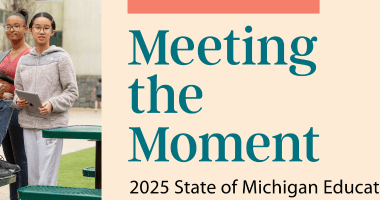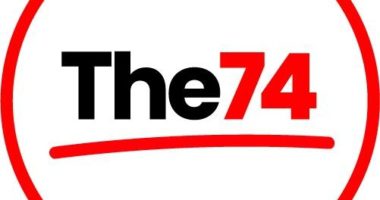Opinion: It’s time for Michigan to invest in its most vulnerable children
From the rural reaches of northern Michigan to the urban centers of our largest cities and the surrounding suburban and exurban communities, every one of Michigan’s 1.4. million public school students deserve the opportunity to flourish in school and life.
Yet, that’s tragically not the case, especially for students who are most underserved.
The state’s recently released M-STEP results are just one of the many indicators that reinforce why we need to urgently transform our education system. Consider that the percentage of students scoring proficient on key subjects is still below pre-pandemic levels. For example, Michigan scores dropped in 2023 in 7th grade math and 3rd grade reading when compared to 2019.
These troubling results build upon Michigan’s persistent opportunity and achievement gaps for the state’s most underserved students, including students from low-income backgrounds, Black and Latino students, and students with disabilities. And when compared with leading education states, Michigan’s student performance too often is near the bottom of the ranks.
We believe Michiganders — no matter their political party or where they live across our vast and beautiful state — generally agree that it’s unacceptable for our students to trail far behind other states in key subjects like reading. And we believe Michiganders agree that we cannot stand for the tragic opportunity and achievement gaps that exist for the state’s students from disadvantaged backgrounds.
Michigan needs to change our troubling trajectory now, as leaders on Gov. Whitmer’s Growing Michigan Together Council are working hard on forthcoming recommendations to improve Michigan’s education system and create a blueprint for growth and prosperity for our state.
The Council should particularly address Michigan’s unfair public school funding system that for too long has been a barrier for many students and the educators who serve them.
While Michigan ranks in the nation’s top ten states for highest base funding for students, Michigan was one of only fifteen states providing less funding to highest-poverty districts than to lowest-poverty districts, according to an analysis of 2018-20 data.
Indeed, Michigan is dramatically underfunding students from low-income backgrounds compared to what leading states practice and what research indicates is needed for those students to succeed, despite progress in the recent budget.
In recent budget years, Michigan had only provided about 9 percent more funding to students who qualify for at-risk funding, which includes students from low-income backgrounds and others with the greatest needs.
In stark contrast, leading state Massachusetts has committed to provide up to about 100 percent more funding for students in its highest-poverty districts, as it implements a funding formula overhaul over the next several years.
It’s no coincidence that Massachusetts is the top-performing education state in the nation. The fact is that money matters in the classroom, especially for students who are the most underserved.
More money alone, however, is not enough to close opportunity and achievement gaps and transform the lives of students and their schools. We call on state leaders to prioritize new dollars for equity before other areas of the state budget, starting next year. This shift will begin to address decades of lack of state investment in Michigan’s working-class and poor communities’ schools, including rural areas where resources are particularly scarce.
New dollars should be coupled with new systems of fiscal transparency and accountability as well. Michiganders deserve to have a greater say in and oversight over how their local schools spend their public dollars — and to have a guarantee that no less than 75 percent of every dollar invested in public schools is actually spent in the local school for which those dollars are designated.
And Michigan leaders need to act with urgency to invest more deeply in students from low-income and English Learner backgrounds — as well as students with disabilities — by aligning state funding with national best practices and what research recommends, including:
- Expand the state’s funding formula to account for differences in need among students and communities by increasing the top weight for students living in poverty to 100 percent by 2030.
- Provide weights of at least 80 percent to 100 percent more funding for English Learners by 2030.
- Provide full funding to support students with disabilities.
Creating a more equitable public school system in Michigan is a fundamental necessity for moving Michigan to becoming one of the country’s top 10 education states.
We have an opportunity to make a transformative investment in Michigan’s children. Let’s invest in their future — the future of our state.
This opinion piece appeared in Bridge Michigan. Alice Thompson is the CEO of BFDI Educational Services, Inc. and chair of the Detroit Branch NAACP’s Education Committee, Amber Arellano is the executive director at The Education Trust-Midwest and Mike Jandernoa is the founder & chairman, 42 North Partners. Thompson, Arellano and Jandernoa are co-chairs of the Michigan Partnership for Equity and Opportunity.









